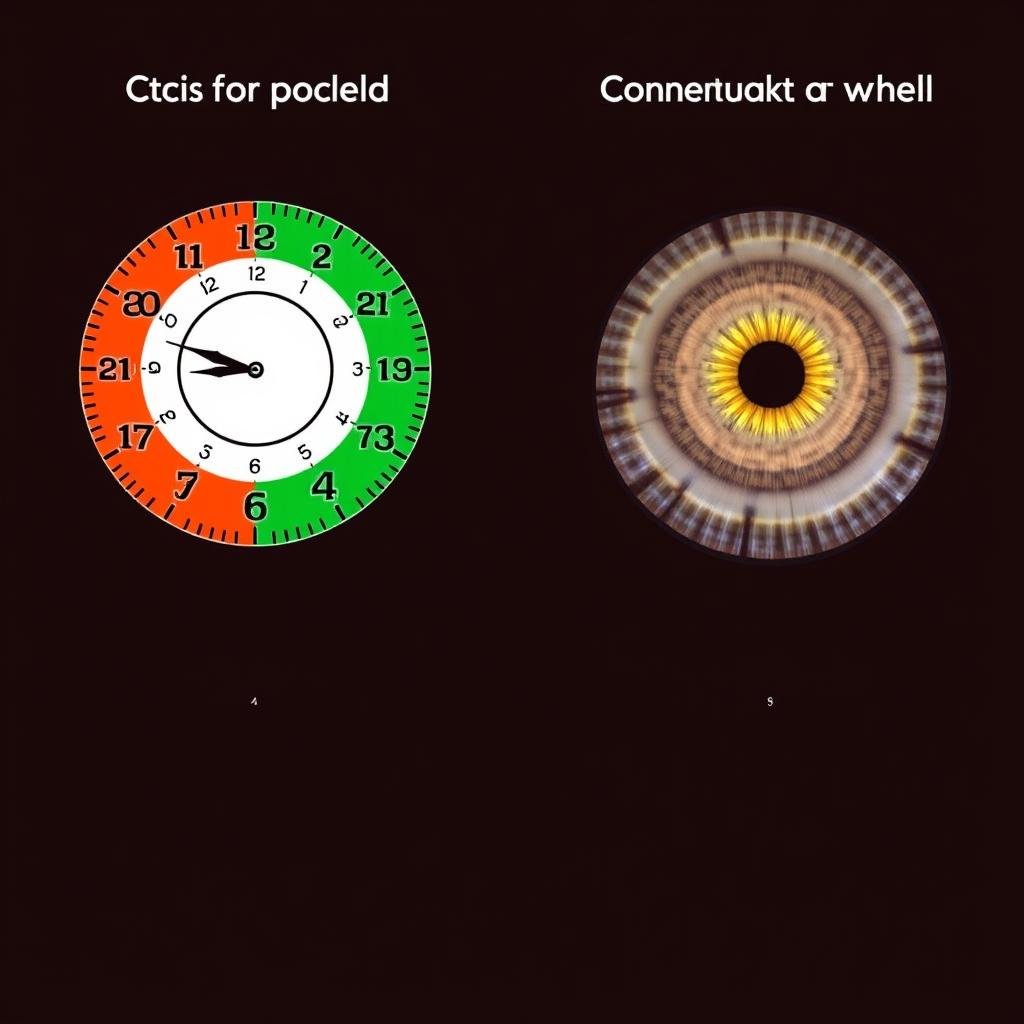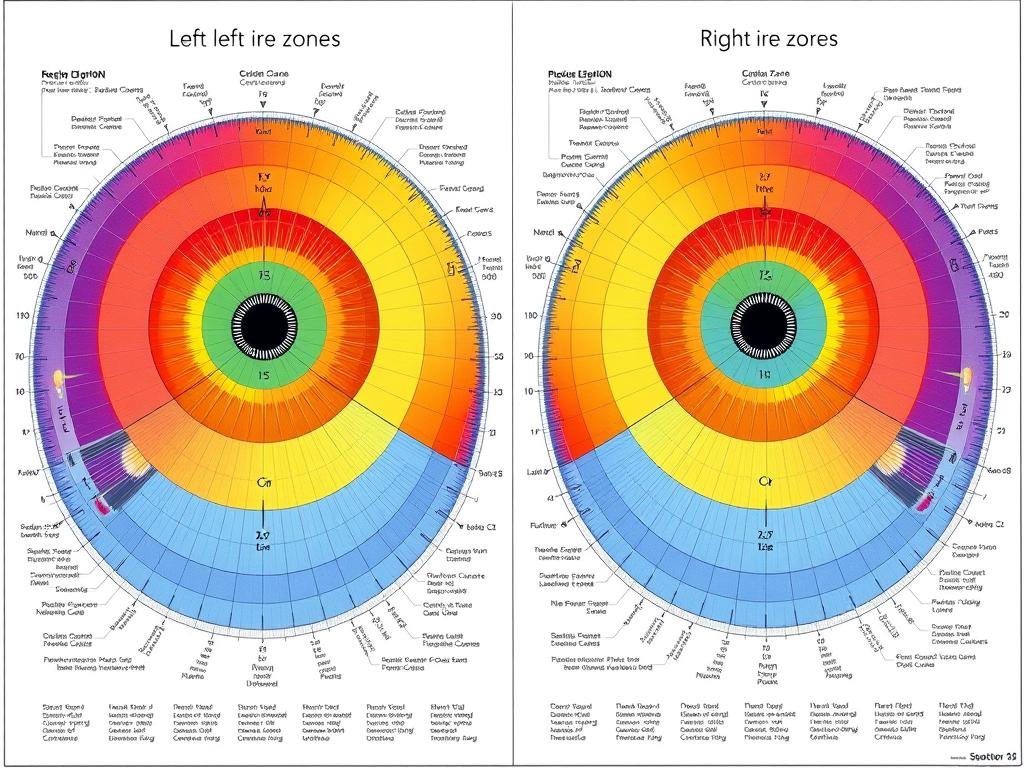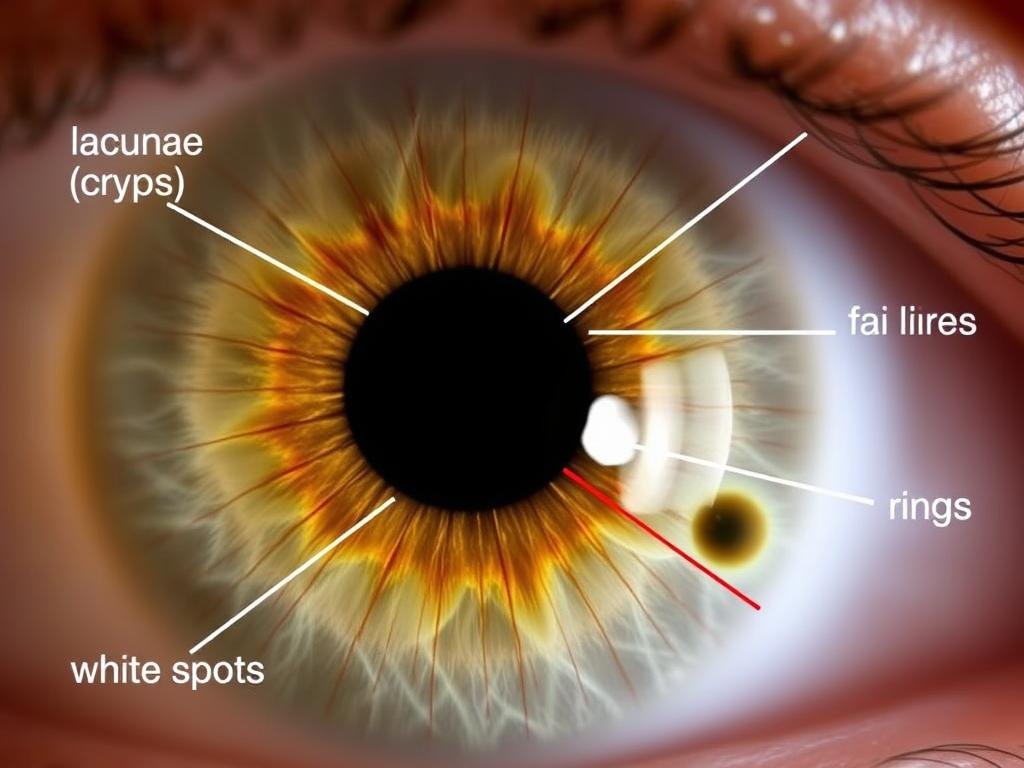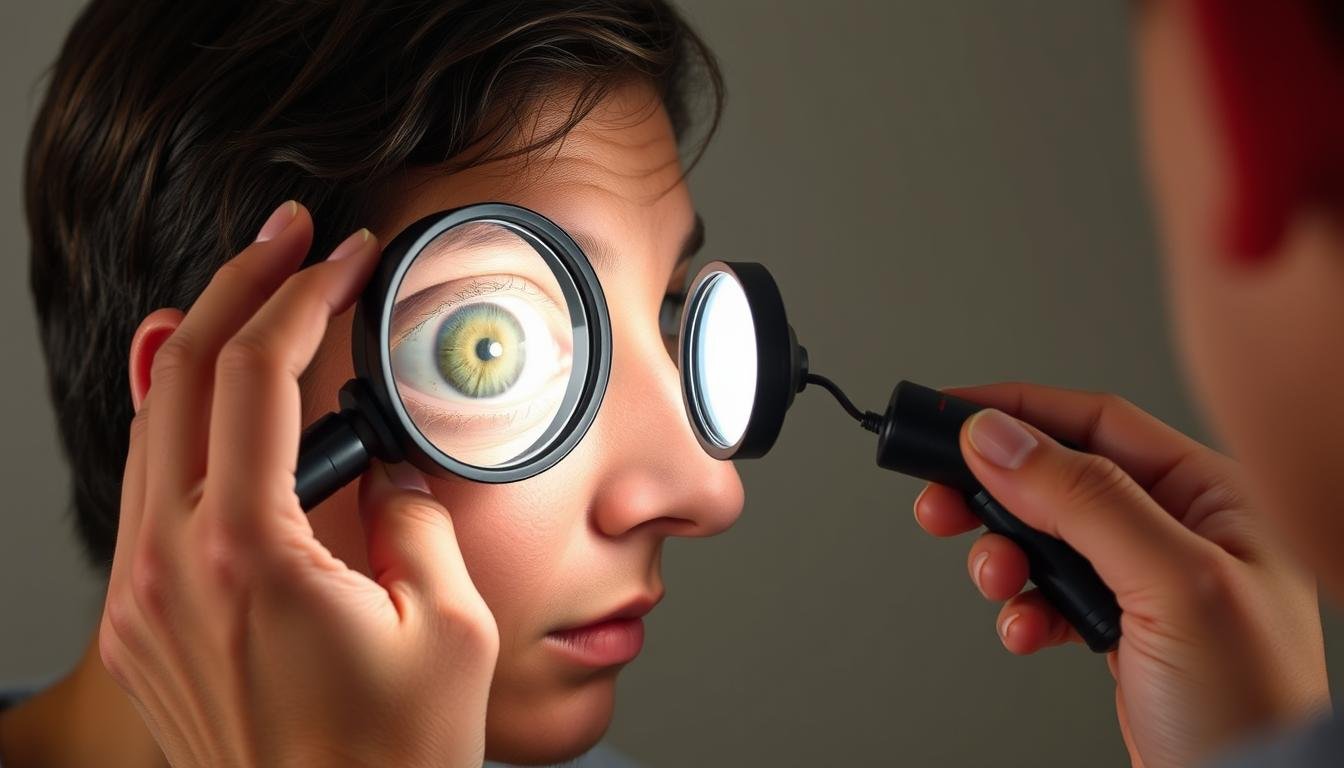The ancient practice of iridology uses the iris – the colored part of your eye – as a map to potential health conditions in your body. At the center of this holistic practice is the iris chart, a detailed map that divides the iris into zones corresponding to different organs and systems. Whether you’re curious about alternative health approaches or seeking to understand what your eyes might reveal, this guide will walk you through the fundamentals of iridologia diagramei irisului, from basic interpretation to practical application.
What Is Iris Chart Iridology?
Iridology is the study of the iris patterns, colors, and changes as they relate to potential health conditions in the body. An iris chart serves as the fundamental tool that practitioners use to connect specific areas of the iris to corresponding body parts and systems. These charts act as maps that guide iridologists in their analysis and interpretation of what they observe in a person’s eyes.
The practice is based on the theory that the iris contains nerve endings connected to every tissue of the body through the nervous system, making it a potential indicator of underlying health issues. When body tissues become inflamed or damaged, iridologists believe these changes may be reflected in the corresponding area of the iris.


Traditional iris chart showing organ correspondences in both left and right eyes
The History and Development of Iris Charts
The modern practice of iridology is often attributed to Ignatz von Peczely, a Hungarian physician who, in the 1800s, noticed changes in an owl’s iris after it suffered a broken leg. This observation led him to develop the first comprehensive iris chart in 1880, mapping connections between iris zones and body organs.
In the 1950s, American chiropractor Bernard Jensen further developed these concepts, creating a more detailed iris chart that remains influential today. Jensen’s chart divided the iris into more than 90 zones, each corresponding to specific organs and systems in the body.
Over time, various practitioners have developed their own versions of iris charts, though most follow similar principles of dividing the iris into concentric rings and clock-like sectors.
Understanding Different Iris Chart Systems
Several iris chart systems have developed over the years, each with its own approach to mapping the iris. The two most common systems are the clock model and the concentric ring model, though many modern charts combine elements of both.
| Chart System | Structure | Caracteristici cheie | Primary Use |
| Traditional Jensen Chart | Clock model with concentric rings | 90+ zones, detailed organ mapping | Comprehensive health assessment |
| Modern Simplified Chart | 7 concentric rings, 12 clock sectors | Easier to learn, focuses on body systems | General wellness screening |
| European/German Chart | 10 concentric zones, detailed subdivision | Emphasizes psychological connections | Mind-body connection analysis |
| Russian Chart | Sector-based with embryological focus | Based on embryonic development patterns | Constitutional assessment |
The Clock Model
The clock model divides the iris into 12 sectors, like the face of a clock. Each sector corresponds to different organs and body systems. For example, the liver is typically located in the 8 o’clock position of the right iris, while the heart is found around the 3 o’clock position of the left iris.
The Concentric Ring Model
This model divides the iris into concentric rings, with each ring representing different body systems based on their distance from the pupil. The innermost ring typically corresponds to the digestive system, while outer rings relate to the skin, muscles, and bones.


Comparison of clock model (left) and concentric ring model (right) in iridology
How to Read an Iris Chart: Understanding the Zones
Reading an iris chart requires understanding how different zones correspond to body organs and systems. Most comprehensive iris charts divide each iris into approximately 60 zones, with the right iris generally corresponding to the right side of the body and the left iris to the left side.
Right Iris Zones (Right Side of Body)
- Top Region: Brain, head, and sinuses
- Upper Right Quadrant: Lungs, bronchi, and throat
- Right Middle Area: Liver, gallbladder, and pancreas
- Lower Right Region: Appendix, ascending colon, and right kidney
Left Iris Zones (Left Side of Body)
- Top Region: Cerebral circulation and mental function
- Upper Left Quadrant: Heart, spleen, and stomach
- Left Middle Area: Small intestine and descending colon
- Lower Left Region: Left kidney, bladder, and reproductive system

The pupil forms the center of the chart, with the digestive system typically represented in the zones closest to the pupil. Moving outward, you’ll find zones representing the circulatory system, lymphatic system, musculoskeletal system, and finally the skin at the outermost edge of the iris.
Interpreting Iris Markings and Features
Beyond the zones themselves, iridologists analyze specific markings, patterns, and color variations within the iris. These features are believed to indicate different health conditions or predispositions.
Marcaje comune de iris și interpretările lor
Semne structurale
- Lacune (cripte): Open spaces or pits in the iris fiber that may indicate inherent weaknesses in corresponding organs
- Raza solară: Spoke-like lines radiating from the pupil, potentially indicating toxicity or nerve stress
- Rings: Circular formations that may relate to nervous system conditions or stress
Color Signs
- White or Yellow Spots: May indicate inflammation or acute activity
- Puncte întunecate: Potentially showing toxin accumulation or tissue damage
- Schimbări de culoare: Shifts in iris color over time might reflect changing health conditions

Common iris markings analyzed in iridology practice
Tipuri de Constituție Iris
Iridologists also classify irises into different constitutional types based on their fiber structure and color:
- Lymphatic Type: Blue iris with loose, widely spaced fibers
- Hematogenic Type: Brown/mixed iris with densely packed fibers
- Biliary Type: Green/hazel iris with mixed fiber patterns
These constitutional types are believed to indicate a person’s inherent strengths, weaknesses, and predispositions to certain health conditions.
Step-by-Step Guide to Basic Iris Self-Analysis
While professional iridology typically requires specialized equipment and training, you can perform a basic self-analysis using a few simple tools. Here’s how to get started:
- Gather Your Tools: You’ll need a small flashlight, a magnifying mirror, and a printed iris chart for reference.
- Create Proper Lighting: Stand in a well-lit area, ideally with natural light coming from the side rather than directly in front of you.
- Position Your Mirror: Hold the magnifying mirror at eye level, about 6-8 inches from your face.
- Illuminate Your Iris: Use the flashlight to shine light across your eye (not directly into it) to illuminate the iris without causing pupil contraction.
- Observe Overall Patterns: Note the color, density, and overall structure of your iris.
- Look for Markings: Identify any notable spots, lines, or discolorations in your iris.
- Compare with Chart: Reference your iris chart to see which body zones correspond to any markings you’ve observed.

Proper technique for iris self-analysis using a magnifying mirror and flashlight
Notă importantă: Self-analysis should be considered educational rather than diagnostic. Any concerning findings should be discussed with a healthcare professional. Iridology is not a substitute for proper medical care.
Interactive Iris Chart Diagram
Below is a simplified interactive iris chart that allows you to explore the different zones of the iris and their corresponding body systems. Click on different areas to learn more about what each zone represents in iridology.

This interactive chart is a simplified representation. Professional iridologists use more detailed charts with up to 90 distinct zones for comprehensive analysis.
Perspectivă științifică și controverse
While iridology has many devoted practitioners and followers, it’s important to understand that the practice remains controversial in the scientific and medical communities.
Susținătorii susțin
- The iris contains thousands of nerve endings connected to the body via the nervous system
- Many practitioners report consistent patterns in their observations
- It can be a non-invasive screening tool to identify areas for further investigation
- Some small studies have shown correlations between iris signs and certain conditions
Critics Point Out
- Limited scientific evidence supporting iridology’s diagnostic accuracy
- Several controlled studies have failed to show that iridologists can consistently identify diseases
- The iris structure remains largely stable throughout life, contradicting the theory that it changes with health conditions
- Potential danger if serious medical conditions are missed or treatment is delayed
Cercetări și Studii
Several scientific studies have examined iridology’s effectiveness. A notable 1979 study published in the Journal of the American Medical Association found that iridologists could not consistently identify patients with kidney disease by examining photographs of their irises. Similar studies have produced comparable results for other conditions.
However, proponents argue that these studies often use methodologies that don’t reflect how iridology is actually practiced, and that iris analysis is meant to identify predispositions and tendencies rather than provide definitive diagnoses.
“Iridology has shown to be of little benefit to anyone. Patients and therapists should be discouraged from utilizing iridology, since it has the potential to cause personal and financial harm.”
— Study published in 2000, cited by All About Vision
The Bottom Line on Iris Chart Iridology
Iris chart iridology offers a fascinating perspective on potential connections between the eyes and overall health. While many find value in this holistic approach, it’s best viewed as a complementary practice rather than a replacement for conventional medical care.
If you’re interested in exploring iridology, consider these balanced approaches:
- Use it as one tool among many for general wellness awareness
- Consult trained practitioners who acknowledge the limitations of the practice
- Always follow up on concerning findings with appropriate medical professionals
- Approach the practice with both an open mind and healthy skepticism
Whether you’re a firm believer or a curious skeptic, understanding the principles behind iris chart iridology can provide interesting insights into this alternative approach to health assessment.

Professional iridology assessment combines careful observation with chart reference












